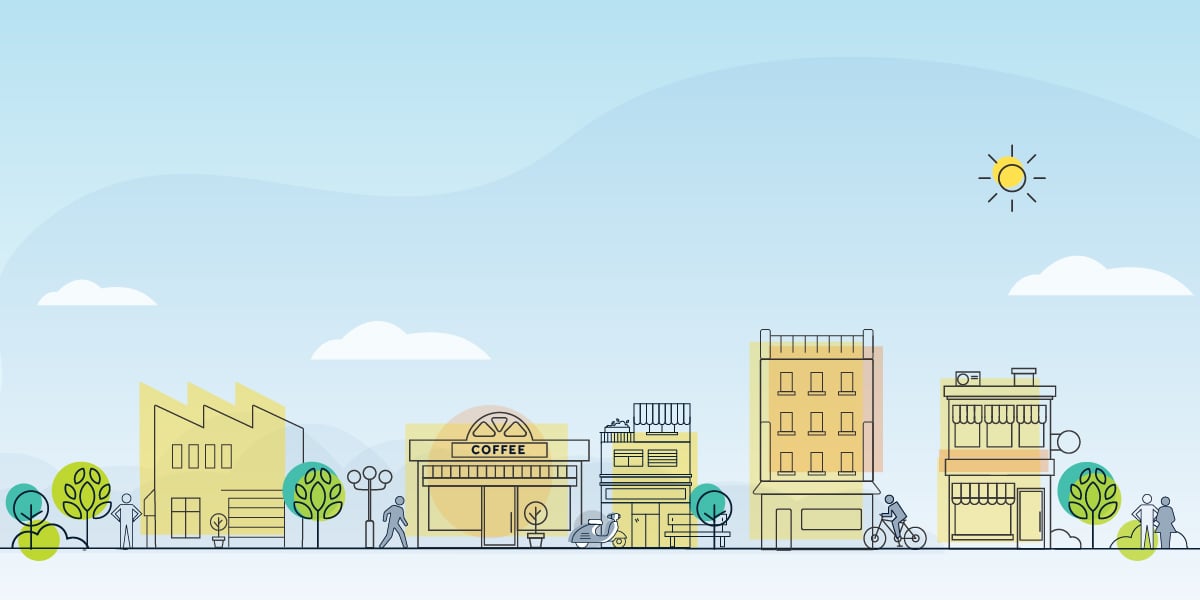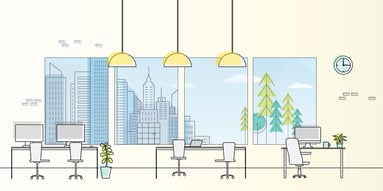RE:location: The urban shift: Diversifying live, work, and play

With people feeling the crunch of city living, the suburbs and urban outskirts near transit hubs have been gaining popularity. As major cities around the globe feel the ebbs and flows driven by the pandemic, dispersed workplace location strategies have come into play.
As companies respond to how their teams will work in the future by developing new workplace strategies and re-evaluating current office environments, it’s time to look beyond the CBD office to consider new opportunities that offer flexibility and better work/life balance.
Re:thinking location
Historically, CBDs have been the homes to live, work, and play modes, creatively designed to encourage employees to stay at the office longer. However, as we enter a new age of working, shifting dynamics and demands have changed the way we look at location. People want choice, mobility, and access to conveniences throughout their day. This could mean being able to take a walk in the fresh air, getting coffee at a local café, or hosting a client event. How can companies support the different needs of their people while giving them the desired flexibility?
Instead of trying to combine work and home lives into a single location, we need to relook at work modes and behaviors, and align them to different locations. Understanding the purpose of CBDs, the fringes, and the suburbs and allocating space appropriately will help keep staff engaged and happy. The pandemic has caused us to rethink how we use space; is location any different?
The blended work model
City Business Developments (CBDs)
CBDs are known as attractive and highly competitive areas at the epicenter of activity, convenience, and amenities. Over the years, the CBD office has become a utopia for workers; however, after months of working from home, employees have discovered the benefits of the community. What does this mean? While these city center offices will continue to focus on brand, culture, and corporate time, surrounding urban environments can provide attractive opportunities at more affordable prices.
The fringes
Located around the city, fringe areas are the up-and-coming "secondary cities." They provide employees with the desired sense of community, access to retail, transportation, and public spaces. Workspaces are integrated into the neighborhoods, using old mills, dockyards, and warehouses to create innovative and creative hubs. These flexible spaces will be for collaboration, co-creating, and group work.
As urban planners continue to build out this residential-like model with amenities like public transport, cycling infrastructure, walkable zones, parks, and sustainable initiatives, urban offices will become popular supplements to the CBD. In the future, fringes will be areas to get fresh air, socialize, and connect with clients, colleagues, and friends.
The suburbs
The suburbs, located past the city outskirts, are homes to the majority of workers, providing space, affordability, access to high-quality neighborhoods, among other amenities. Traditionally this meant commuting into the CBD office during the week, while managing home-related tasks. Now, after months of remote working, teams have grown accustomed to working productively while completing home tasks. In fact, some tasks are best done at home, like focus work and learning.
Trends stemming from large tech giants like Facebook, Amazon, and Microsoft have caused companies to consider suburban spaces that offer access to various amenities in proximity to their homes.
Access our location guide for more information on the shift to the suburbs.
Planning for the future
We know the future of work will demand a more agile way of working. As companies move past traditional thinking to reconsider how and where work is best done, the urban shift uses location to create a truly engaging experience. Whether it’s reconsidering your downtown office, expanding to the fringes, or shifting across multiple locations, our workplace framework, Propeller, can help you plan your path forward.
The next article in the Re:location series is coming out soon! Keep a look out for Re:location: The city shift: A time for reinvention.


